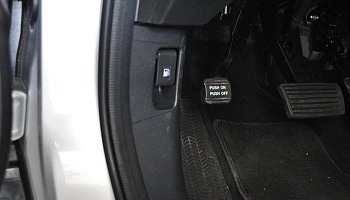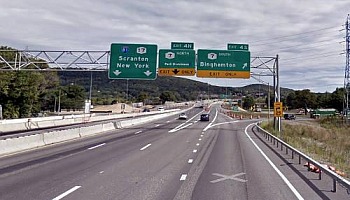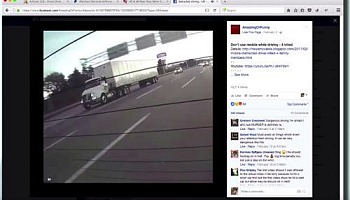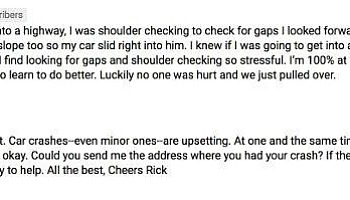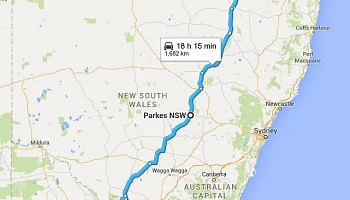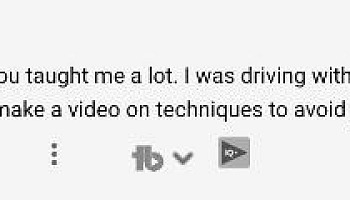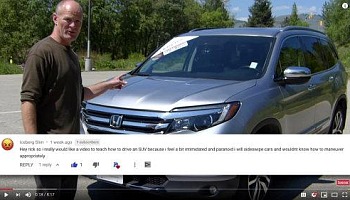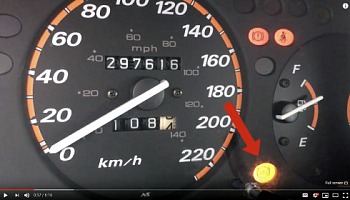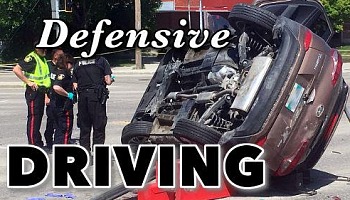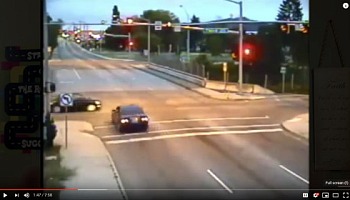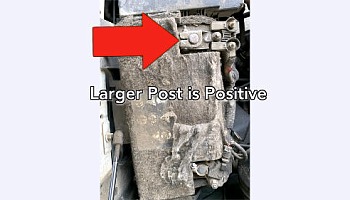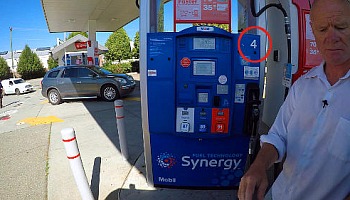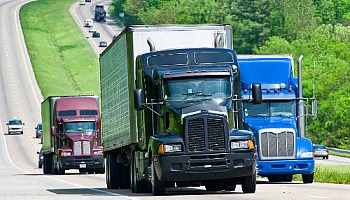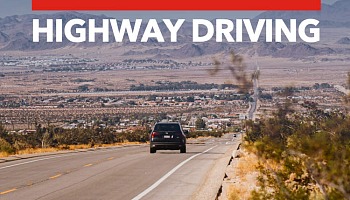Cruise control saves you money, makes you happy, and stops road rage! Watch the video!
How to Use Cruise Control | New Driver Smart
Closed Caption
Introduction
Hi there smart driver, Rick with Smart Drive Test talking today about how to use cruise control. I had a comment from Jannely d she wanted some more information about how to use cruise control because I had mentioned in one of the other videos.
Cruise control has several benefits and you want to use it because it will give you better fuel economy for your vehicle.
As well, it will reduce stress and fatigue over a longer trips, and finally in any case, it always moves to reduce distracted driving. Stick around, we'll be right back with that information.
[OPENING CREDITS & MUSIC]
Benefits Of Using Cruise Control
Hi there smart driver, welcome back. Rick with Smart Drive Test talking to you today about how to use cruise control. And yes, you do want to use cruise control because there are set several benefits to using cruise control:
The first benefit is that you're going to get better fuel economy because you're maintaining a steady speed with your vehicle. And when you get better fuel economy, that means more money in your pocket. So you want to use it for that purpose.
The second reason is that it's going to reduce stress and fatigue over a longer drive because you're not running up on other vehicles and those types of things and having aggressive use of the primary controls.
And you know, cussn' and swearing and banging on the steering wheel because other vehicles are going as fast as you would like them to.
And finally, it reduces distracted driving because you're not always monitoring the speed of your vehicle because you have it on cruise control. And you know that you have a set speed.
How to Use Cruise Control to Reduce Distracted Driving
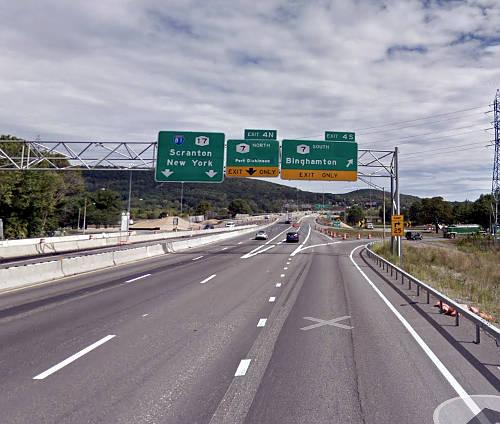
Now one of the things about cruise control is that a lot of people say they don't have feel that they have total control of the vehicle.
And I can only imagine what those people are going to be saying when they get in one of these self piloting vehicles and they have to sit in the driver's seat and they feel like they don't have control.
Cruise control gives you a fair amount of control compared to a self-piloting vehicle.
Anyway, I digress.
One of the key techniques to using cruise control is that you want to set the speed at a couple of kilometers or a couple of miles an hour less than what the traffic flow is.
That way you're not going to be running up on vehicles and having to turn your cruise off and on all the time.
Set Cruise Control a Bit Below Speed of Traffic Flow
If you set it a couple of kilometers less or at what the traffic flow is on a multi-lane highway, the other traffic is just going to flow around you and you stay in the right-hand lane. So that's a key technique to using cruise control, and not having to turn it on and off all the time.
Now the other thing that people say to me about cruise control is when they get on the freeway they always have to turn it off when they're passing another vehicle. The reason for a freeway and a multi-lane highways is so that you can maintain a steady speed.
When you're passing other vehicles don't turn the cruise control off and then speed up - that negates the benefit of having cruise control.
Just leave it on the constant speed.
If you're doing two or three kilometers an hour more than the other vehicle that you're passing, just go out into the passing lane, pass the other vehicle and move back into the right-hand lane when you get past them.
So that's the keys to using the cruise control. Now all cruise controls are essentially the same.
They have an on/off switch - you can see here in the image.
As well, they have a set and a resume. And the set button is the deceleration button, and the resume button is also the acceleration button. You can essentially drive the vehicle with the cruise controls.
Now when you get it up to speed and you want to set the speed, say for example at 90 kilometers an hour or 55 miles an hour, you simply hold your foot on the throttle push the set button - after you've turned it on obviously.
Push the set button on the cruise control and it will set and it will operate at 90 kilometers an hour or 55 miles per hour. Now if you go through town and you touch the brake, the cruise control will disengage.
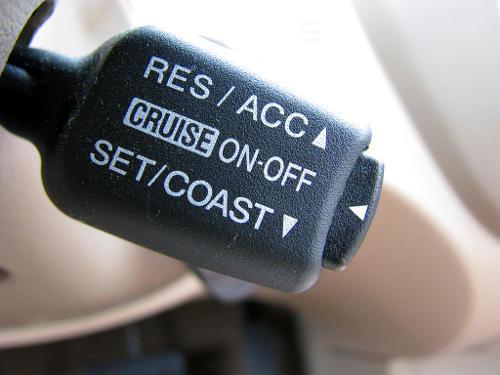
When you go through town and come up back on the other side and you want to go back up to 90 kilometers an hour 55 miles an hour you simply hit resume again once you get a little bit of speed and it will go back to that previous set speed.
Now the other thing is, is if you want to decelerate you can simply hold down the set button and it will the vehicle will decelerate in speed so long as you hold down the deceleration button.
The other thing is is that the resume button - you can hold it down and the vehicle will accelerate as long as you hold that down.
Now the one thing that people often don't know about the cruise control is that the resume--the acceleration button--if you click it one time--for every time that you click it--it will go up one kilometer an hour, if you're in a country that works on metric.
If you're in the United States, the speed will go up one mile an hour.
And it's the same with the set button-- the acceleration button--if every time you click it it will go down one kilometer an hour or one mile per hour.
So for example, if you want to set it at 55 miles an hour and it's at 58 miles an hour when you set it you simply click it three times, the vehicle decelerate to exactly 55 miles per hour.
Now some of these newer pickup trucks and commercial vehicles, if you have it on cruise - when it goes downhill and it goes up five or ten kilometers or five miles an hour above the set speed that you have it on the Jake brake will kick in automatically - the engine brake will kick on.
So know that if you're driving an older commercial vehicle or you have a newer pickup truck it will do that as wel.
So what we're going to do here, we're going to go out on the highway, we're going to work the cruise control and we're going to show you how it works. As well, I've got a camera set up my speedometer - new and improved how to use the cruise control and we'll show you how to do that.
Everything going well, you'll be able to see the speed as well.
In the Car
Hi there smart drivers we're out on the highway here and we're talking about how to use cruise control.
And I have my cruise control set at 90 kilometers an hour, which is 55 miles an hour.
And on this vehicle the speedometer's off a little bit.
So it's just a touch over 90 kilometers an hour, which is exactly 90 kilometers an hour on this vehicle.
And you can also see on the dash that there is an indicator there that tells you that cruise control is in fact on.
On this Honda it's a green light and it says cruise control.
Different vehicles will have different indicators on the dash to tell you that you have the cruise control set. And it's on and you can see here in front of me that I'm doing 90 kilometers an hour exactly, which is the posted speed limit.
Which most of the time is going to be less than what the traffic flow is.
And you can see here that I'm keeping a good distance in front of me; that vehicle front of me is obviously, it's doing the speed limit as well - the white vehicle that the pickup truck just passed.
And oftentimes if you put the cruise control on the posted speed limit the other traffic is just going to flow around you and you're not going to have to pass - you're not going to speed up and those types of things.
Now one thing I do want to show you here:
oftentimes when people get on multi-lane highways they negate the benefits of cruise control, which is improving fuel economy because they turn it off and on all the time when they pass other vehicles.
When you're on a multi-lane road like this and you're passing that vehicle as I am right now, you just leave the cruise control on, move out to the left hand lane and stay in this lane you don't have to--you know-- accelerate past the vehicle because as soon as you accelerate, you negate all the benefits of increased fuel economy.
Unless there's a whole pile of vehicles behind you--you just watching the rear-view mirror here--there isn't anybody behind me. So there's no hurry for me to get by that car and now I'm by that car I can see them in the rearview mirror here and I just put my signal on and I move back over to the right-hand lane.
I don't hang out in the left-hand lane and I leave my signal on all the way into that lane. And cruise control - you never came off cruise control; you're not stressed out, you're not fatigued - so just leave cruise control on when you're on a multi-lane road.
Just move over to the passing lane, pass the other vehicle and then as soon as you get past, get back into the right-hand lane. That way you get the full benefit of cruise control. As I mentioned earlier, cruise control has three main buttons: it has an on/off switch - on the Honda here it's on the dash.
On different vehicles it could be on the signals where the controls are for the cruise control. A lot of times, it's on the steering wheel here: on this one here it has a 'Resume' and 'Set' on the steering wheel, so when you get it up to speed.
So the speed limit here is going to go to 100 kilometers an hour so instead of pushing down on the throttle and resetting it, I just hold the resume button, which is also the accelerate button.
And you can see that as long as I hold that button it's going to accelerate. You can see that the speedometer is climbing and it's going to go up to a hundred kilometers an hour.
And as soon as it just gets a little bit past 100 kilometers an hour --right about there--then I just let go of the resume button and it will set at that new speed.
And as well, if I wanted to slow down--if there were vehicles in front of me, for example -I can see down and I saw the gap between the vehicles slowing down--and I wanted to decelerate, I just push the set button and that vehicle will slow down as long as you hold that button.
So now it's at 90 kilometers an hour and now it will set at that speed as you can see on the speedometer.
As well, if I accelerated back up to 100 kilometers an hour, I hold down on the resume button--the acceleration button--it will accelerate for as long as I wanted to.
And say for example, I wasn't paying attention and I set it right there.
Now it's at about a hundred and two and I wanted to go back to exactly a hundred kilometers an hour which is 62 miles an hour, I just hit the deceleration button--I click it two times and it will decelerate one kilometer per hour or one mile per hour, depending on which country you're in, for every time you click it. It's the same with the acceleration, if I wanted the speed to go up one kilometer an hour--one mile an hour--I simply click the acceleration button two, three times and as you can see here, every time I click it it goes up one kilometers an hour.
So now I'm doing approximately one hundred five kilometers an hour.
Same thing with the deceleration - if I click that--every time I click it, it goes down one mile per hour and it works the same on every cruise control, whether it's on a car or bus or light truck or a big truck - a commercial vehicle.
All of the cruise controls work the same. Every time you click that, it will go up one mile an hour or one kilometer an hour. Now the other thing about the cruise control:
if you're driving a manual transmission, as soon as you touch the clutch the cruise control will disengage.
So I just touched the clutch and you can see that it starts to decelerate because I have disengaged the cruise control by touching the clutch. Now if I push resume the vehicle will go back to the set speed that I had it at previously, which was a hundred kilometers an hour.
Now it'll climb back up to 100 kilometers an hour. Not very quickly in this vehicle - the little four-cylinder and we're on a bit of a hill here, but it will climb back up to 100 kilometers an hour.
As well, if you're driving an automatic vehicle and you touch the brake and make a brake application, it will again disengaged the cruise control - so it will disengage, So the cruise control is connected to the pedals.
And then you just hit resume.
Now the other time that you hit resume: as if you come into a town or whatnot and you touch the brake it will disengage--or the clutch--you meander through town and you come out the other side and you want to reset it again.
Just bring your speed back up to around where you had it previously and then hit the resume again and it will resume again.
So that's how you use cruise control. And as I said cruise control on all vehicles is essentially the same, it has three buttons:
1) an on/off switch;
2) set;
3) resume - accelerate, decelerate and often the set and resume button are the decelerate and the accelerate button.
Some cruise control units will have a cancel button. The cancel button is rare and probably found on newer vehicles. Quick review of cruise control. All cruise controls have three buttons: they have an
1) on/off switch;
2) they have a resume switch;
3) and they have a 'Set' switch. the 'Set' switch is also the deceleration button, and the resume button is also the acceleration button.
The deceleration and accelerate button - if you hold either one of those - for as long as you hold them and you have the cruise control set, it will either accelerate or decelerate the vehicle.
If you click one of those buttons, however many times you click it, the vehicle will accelerate or decelerate the number of miles per hour or km/h that you have clicked the button.
As well, if you touch the brake or touch the clutch--if you're driving a manual transmission--while the vehicle is on cruise control, it will automatically disengage the cruise control.
So know that. Know that if you use the throttle and you accelerate and pass another vehicle, for example, that the cruise control will not disengage when you use the accelerator.
So if you let off the throttle, it'll go back to the set speed that you had previously.
For example, if you're driving on the freeway at 60 miles per hour and you accelerate past another vehicle at 70 mph, as soon as you let your foot off the throttle and you haven't cancelled the cruise using the buttons, then the vehicle will go back to the set speed of 60 miles an hour.
So just keep that in mind when you're using cruise control.
Conclusion
Three benefits to using cruise control:
1) increased fuel economy, and again that is going to be negated if you're accelerating all the time to pass other vehicles on a multi-lane roads. Just leave it on cruise--so long as vehicles are piled up behind you, you can just leave it on cruise, go out into the passing lane, pass another vehicle and then move back over into the driving lane.
For those of us that drive on the right hand side of the road, we're going to move back to the right; for those of you who drive on the left--in Australia & the UK (United Kingdom) you're going to move back over to the left lane.
2) As well, on longer trips the cruise control is going to reduce fatigue and stress because you're not using having aggressive use of the primary controls all the time.
When you arrive you're going to be nice and relaxed. And when you get there at the end of the day, you're not going to need a massage, and you're not going to need a psychologist.
3) And finally, cruise control reduces distracted driving because you're not monitoring your speed all the time.
And the key technique to using cruise control successfully - set it a couple of kilometers--a couple of miles an hour-- less than the traffic flow. That way you're not running up on traffic all the time. And that is the key to using cruise control successfully.
A question for my smart drivers:
Do you use cruise control? Do you use it a little bit; do you use it every now and again?
Do you use it you know... whenever you get out on the highway, or do you use it a lot - your kind of an obsessive user like I am? Leave a comment down in the comment section there.
All that helps out the new drivers learning how to better operate the controls on their vehicle after getting your license. I'm Rick with Smart Drive Test - thanks very much for watching.
If you like what you see here share, subscribe, leave a comment down in the comment section.
As well, hit that thumbs up button. Check out all the videos here on the channel if you're working towards a license or starting a career as a truck or bus driver.
Lots of great information. Stick around to the end of the video - some funny stuff and all the links to the other videos and the link to my website where you'll find more great information.
Thanks again for watching, good luck on your road test.
And remember, pick the best answer not necessarily the right answer. Have a great day. Bye now.
Blooper
Just give that a quick teeeeeeesssssst before I carry on. Take three of the cruise control video conclusion.
The first was dark and the second one was out of focus. [AHHHHHHHHHHHH - FRUSTRATED] So we're doing it in the studio!!!

